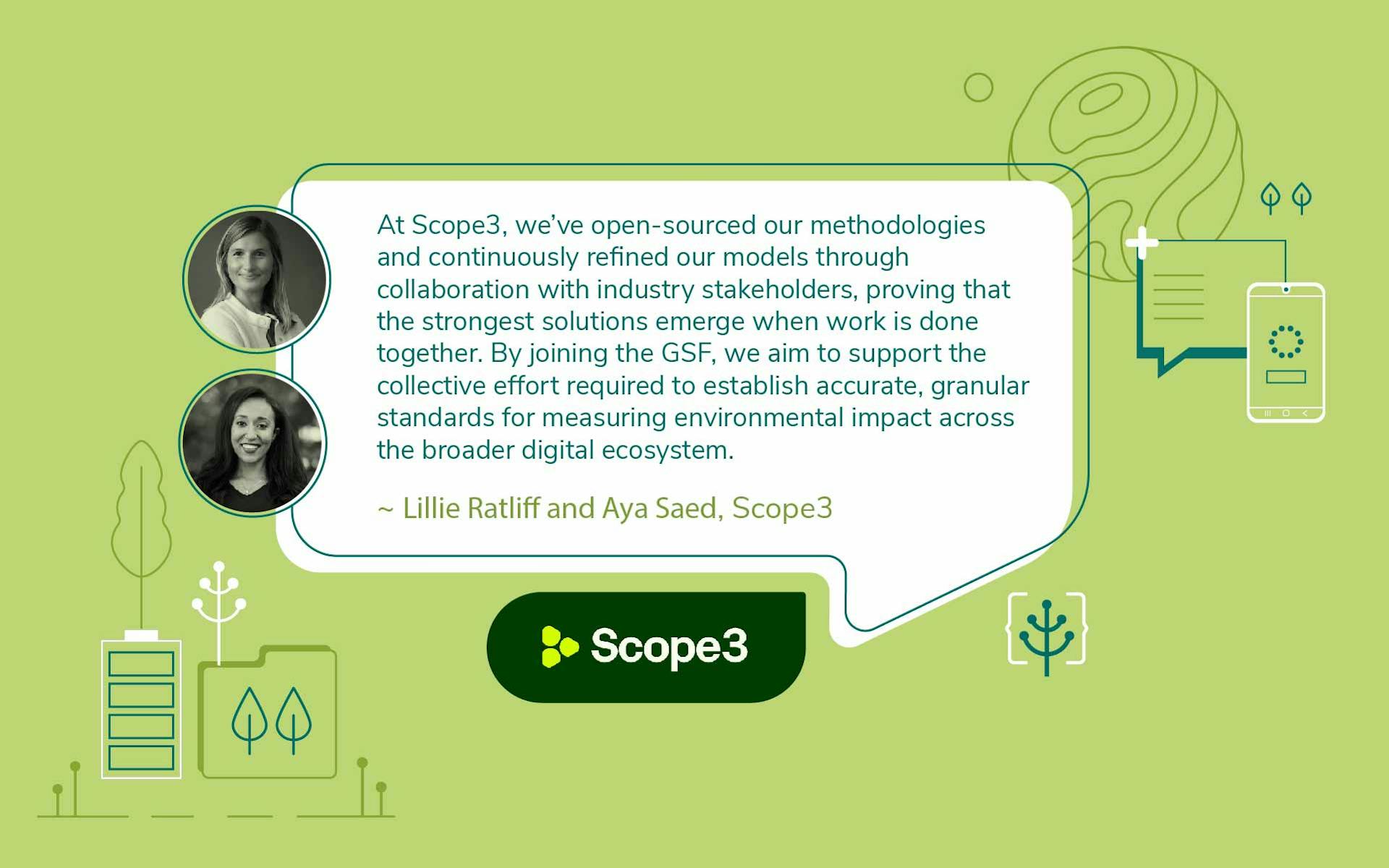As Scope3’s Head of Strategic Initiatives, Lillie directs AI work and drives the core mission forward. Previously, Lillie ran research and services at Scope3, leading core improvements to the methodology powering the company’s emissions model.
Aya is a policy professional specializing in the intersection of energy and AI. As Director of AI Policy and Strategy at Scope3, she informs and educates policymakers, industry leaders, and advocacy groups about the need for harmonized regulation to address AI energy needs.
Can you tell us about Scope3?
Scope3 designs solutions to drive decarbonization across media and advertising.
We pioneered the measurement and optimization of carbon emissions in digital supply chains, laying the foundation for the $100+ billion programmatic advertising industry.
Today, we're applying our expertise to help organizations measure and reduce their environmental impact across digital operations, with a particular focus on AI systems. Our leadership team brings together expertise in complex algorithmic systems, climate science, and industry transformation.
Why did you join the GSF?
Since the beginning, we’ve open-sourced our methodologies and built our models through constant iteration with industry stakeholders, proving that the strongest solutions emerge when work is done together. This approach led to the establishment of industry-wide standards for measuring and reducing carbon emissions.
We see an opportunity to bring this same collaborative model to GSF, where collective efforts are necessary to align how to quantify the environmental impact with accuracy and granularity across the broader digital ecosystem. Together, we aim to create practical pathways for enterprises to optimize their AI operations for both performance and sustainability.
How does your organization see the future of green software?
We see a future where environmental responsibility and technological advancement go hand in hand to drive sustainable growth. Drawing from our experience in digital advertising, we believe the same principles can transform software development at large.
AI will transform the world, and its rapid adoption brings both challenges and opportunities. While compute demands grow exponentially, we see tremendous potential in optimizing these systems for both performance and sustainability. Our vision for the future of software is that it must be developed with scale in mind. This includes real-time monitoring of its environmental impact, standardized efficiency metrics, and automated optimization tools that make sustainable choices the default for developers and organizations.
Which other sustainability initiatives are you working on?
Beyond our core work in measuring and reducing digital emissions, we maintain several key sustainability initiatives:
We are developing a platform to provide real-time usage, cost, and environmental metrics for AI operations, helping organizations make informed decisions about model efficiency. This is in addition to our existing platform for anyone to visualize and learn more about the emissions from digital advertising.
We published industry-first research about the size of the emissions problem in advertising and the impact our efforts were having in driving systemic change. This included the State of Sustainable Advertising reports, as well as Sustainable Media Buying best practices.
We are actively working on AI measurement pilots and have joined NVIDIA Inception.
We invested $1 million in a carbon removal portfolio with Carbon Direct, making it accessible to our clients without additional fees.
We launched programs like "I Cannes Remove Carbon" to address emissions from industry events.
How do you hope to contribute to and benefit from the GSF?
Drawing on our experience measuring and optimizing the digital advertising ecosystem, we’re ready to help advance how this is done for complex algorithmic systems at scale in AI.
Our experience in navigating both technical and policy landscapes positions us to support the GSF community in developing standards that are both technically sound and policy-aware, creating a more cohesive approach to green software development.
Importantly, we see a unique opportunity to provide insights into how technical standards and regulatory frameworks can complement each other effectively to align industry-adopted standards with emerging policy requirements.
Through this collaboration, we hope to connect with fellow leaders who share our vision of sustainable technology, learn from diverse perspectives across the industry, and work together to develop practical frameworks that make environmental responsibility a cornerstone of software development.
This article is licenced under Creative Commons (CC BY 4.0)
